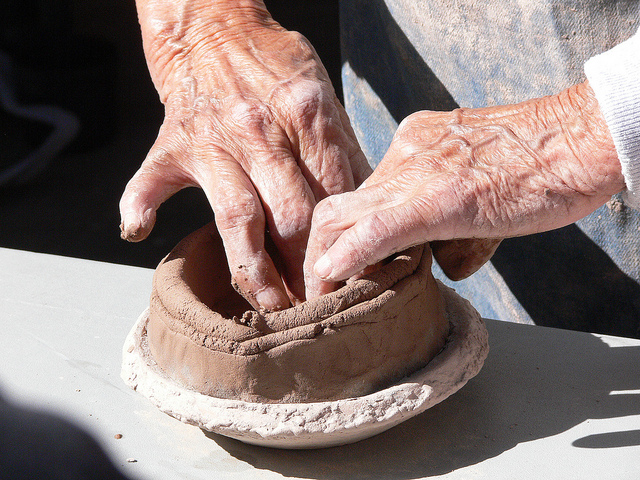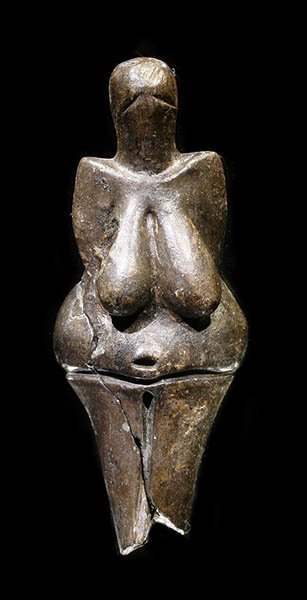The first known clay figurines date from 29,000 to 25,000 BCE. The clay figurines were found in what is now the Czech Republic and originally were fired at low temperatures. One of the figurines is shown below. Clay is composed of ceramic plates which are separated by water. In this wet form, clay is very plastic and can be molded. The water allows the plates to move past each other. When clay is dried or fired, water is driven off and, when fired, heat enables atomic bonding which locks the plates together. Done properly, the fired clay becomes hard, non-plastic, and brittle.
Around 14,000 BCE, tiles were being made in Mesopotamia (modern day Iran) and India, with pottery making beginning around 10,000 – 9,000 BCE. Around 10,000 BCE the roping or coiling method of pottery making was being used to make pots in Japan (see figure below). Recall that this technique was described in the video Secrets of the Terracotta Warriors as the method used by the Chinese to produce the terracotta warriors.

In the next section, we will look at one of the precursor steps to glass containers, Egyptian faience.
